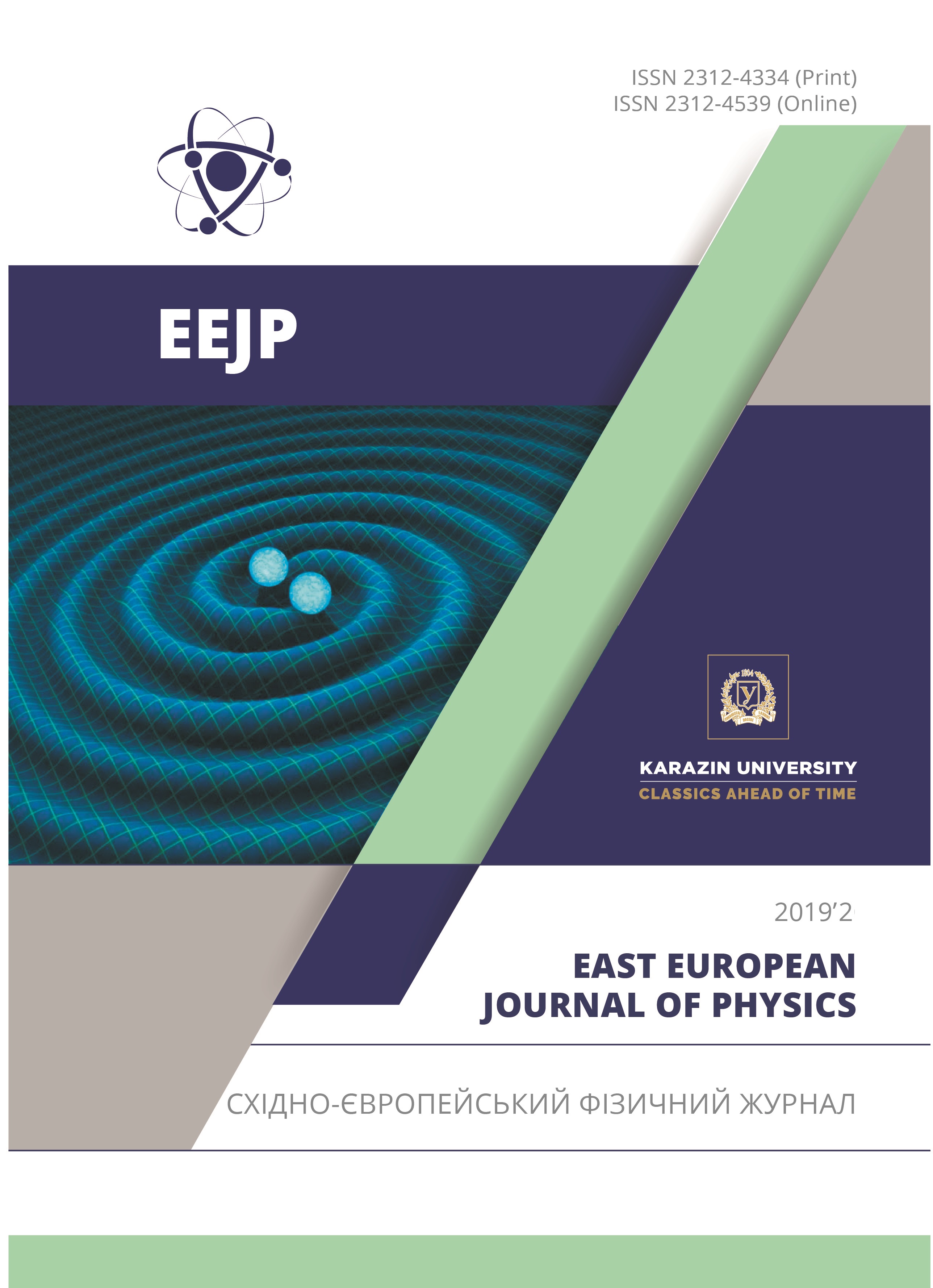Study of Advanced Nanoscale ZrN/CrN Multilayer Coatings
Abstract
The scientific interest in the investigation of nitride composites as protecting materials in tool and machining industries intensively increases. The good oxidation resistance of CrN single-layer films and high melting point, good chemical and thermal resistance of ZrN compound are motive factors for designing of multilayer composites composed of these metal nitrides. The suggested advantages of ZrN/CrN multilayer coatings as structural materials are the high-temperature resistance, high density and extreme hardness compared to the metal-nitride systems. Experimental ZrN/CrN multilayer coatings were deposited on AISI 321 steel substrates by using a cathodic arc evaporation device equipped with two high-purity metal Cr and Zr targets. Structural, chemical and morphological characteristics together with mechanical properties of multilayer composites were analyzed by X-ray diffraction, scanning electron microscopy, energy-dispersive X-ray spectroscopy and Vickers hardness tester. SEM analysis revealed an increase of roughness and concentration of the droplets on the surface of the coatings when negative bias potential decreased to -70 V. The results of data obtained from the X-ray analysis showed (200) and (111) plane for ZrN and Cr2N phases as the most intense. The peak positions of ZrN were shifted towards lower diffraction angles comparing with bulk values and indicated a decrease of the inter-planar distance and formation of compressive stresses. The calculated lattice strain values in the ZrN were higher than those of the CrN, indicated a greater presence of dislocations and defects in the lattice of ZrN. The averaged crystallite sizes in ZrN and CrN layers were 11-14 and 7-12 nm, respectively. The maximum value of the Vickers microhardness was found to be 6600HV0.01 that is 2.1 and 1.8 times greater than the corresponding values of binary CrN and ZrN coatings.
Downloads
References
D.M. Sanders, D.B. Boercker, and S. Falabella, IEEE Trans. Plasma Sci. 18, 883 (1990), https://doi.org/10.1109/27.61499.
O. Knotek, W.D. Münz, and T. Leyendecker, J. Vac. Sci. Technol. A Vacuum, Surfaces, Film. 5, 2173 (1987), https://doi.org/10.1116/1.574948.
H. Willmann, P.H. Mayrhofer, P.O.Å. Persson, A.E. Reiter, L. Hultman, and C. Mitterer, Scr. Mater. 54, 1847 (2006), https://doi.org/10.1016/j.scriptamat.2006.02.023.
H.C. Barshilia and K.S. Rajam, J. Mater. Res. 19, 3196 (2004), https://doi.org/10.1557/JMR.2004.0444.
A.P. Ehiasarian, P.E. Hovsepian, L. Hultman and U. Helmersson, Thin Solid Films. 457, 270 (2004), https://doi.org/10.1016/j.tsf.2003.11.113.
X.M. Xu, J. Wang, J. An, Y. Zhao and Q.Y. Zhang, Surf. Coatings Technol. 201, 5582 (2007), https://doi.org/10.1016/j.surfcoat.2006.07.132.
A.D. Pogrebnjak, Ya.O. Kravchenko, O.V. Bondar, B. Zhollybekov and A.I. Kupchishin, Prot. Met. Phys. Chem. Surfaces. 54, 240 (2018), https://doi.org/10.1134/S2070.
O.V. Maksakova, S. Simoẽs, A.D. Pogrebnjak, O.V. Bondar, Ya.O. Kravchenko, T.N. Koltunowicz and Zh.K. Shaimardanov, J. Alloys Compd. 776, 679 (2019), https://doi.org/10.1016/j.jallcom.2018.10.342.
D.M. Mattox, in: Deposition Technologies for Films and Coatings, edited by R.F. Bunshah (Noyes, Park Ridge, NJ, 1982), pp. 63-82.
M. Pohler, R. Franz, J. Ramm, P. Polcik and C. Mitterer, Surf. Coatings Technol. 206, 1454 (2011), https://doi.org/10.1016/j.surfcoat.2011.09.028.
C. Agashe, B.R. Marathe, M.G. Takwale and V.G. Bhide, Thin Solid Films. 164, 261 (1988), https://doi.org/10.1016/0040-6090(88)90146-0.
F.H. Chung and D.K. Smith, Industrial Applications of X-Ray Diffraction, 1st ed. (CRC Press, New York, 1999), p. 1024.
H.P. Klug and L.E. Alexander, X-Ray Diffraction Procedures for Polycrystalline and Amorphous Materials, 2nd ed. (John Wiley & Sons, New York, 1974), p. 960.
Authors who publish with this journal agree to the following terms:
- Authors retain copyright and grant the journal right of first publication with the work simultaneously licensed under a Creative Commons Attribution License that allows others to share the work with an acknowledgment of the work's authorship and initial publication in this journal.
- Authors are able to enter into separate, additional contractual arrangements for the non-exclusive distribution of the journal's published version of the work (e.g., post it to an institutional repository or publish it in a book), with an acknowledgment of its initial publication in this journal.
- Authors are permitted and encouraged to post their work online (e.g., in institutional repositories or on their website) prior to and during the submission process, as it can lead to productive exchanges, as well as earlier and greater citation of published work (See The Effect of Open Access).








